Did you know that tomato plants have large leaves that can shade the tomatoes if not properly taken care of? It’s true! Tomato plant leaves play a crucial role in the growth and ripening of tomatoes, and understanding how to care for them can make a significant impact on your tomato harvest.
In this article, I will share valuable tips and techniques for maintaining healthy tomato plant leaves. From pruning techniques to removing leaves for faster ripening, we’ll cover everything you need to know to ensure your tomato plants thrive. So, let’s dig in and discover how to optimize tomato plant leaf care for a bountiful harvest!
Key Takeaways:
- Tomato plant leaves play a crucial role in the growth and ripening of tomatoes.
- Pruning tomato plants and removing suckers can help allocate energy to the main stem and tomatoes.
- Removing some leaves allows more sunlight to reach the tomatoes, speeding up the ripening process.
- Tomato plants can develop various leaf problems caused by environmental stress, pests, and diseases.
- Preventive measures such as adequate sunlight, proper watering, and regular inspections can help prevent and treat tomato leaf problems.
Pruning Tomato Plants for Better Growth
When it comes to growing healthy and productive tomato plants, pruning plays a vital role. Pruning involves selectively removing certain parts of the plant to direct its energy towards the main stem and developing tomatoes. One important aspect of pruning is the removal of tomato suckers. These small growths that appear in the leaf axils can divert nutrients and resources away from the main stem, hindering the growth and development of tomatoes.
To successfully prune tomato plants and encourage better growth, you can simply pinch off these tomato suckers by hand or use secateurs for a cleaner cut. By removing the suckers, the plant can allocate more energy towards producing larger and juicier tomatoes. This practice is particularly beneficial for indeterminate tomato varieties that have a tendency to develop multiple side shoots.
It’s worth noting that while some gardeners choose to allow more than one main stem on their tomato plants, this can make it more challenging to control the size and shape of the plant. For most home gardeners, focusing on a single main stem allows for better manageability and healthier growth.
In addition to removing tomato suckers, pruning tomato plants also involves removing large leaves. This helps to improve air circulation around the plant, reducing the risk of diseases such as late blight. By thinning out the foliage, sunlight can penetrate deeper into the plant, promoting even ripening of the tomatoes and reducing the chances of fruit rot.
“Pruning tomato plants not only encourages better growth and higher yields, but also helps maintain a healthier plant overall.”
To give you a visual representation of the process, here’s a step-by-step guide on how to prune tomato plants:
- Identify the tomato suckers that are growing in the leaf axils, usually located between the main stem and branches.
- Using your fingers or secateurs, carefully pinch or cut off the suckers, ensuring a clean removal.
- Remove any large leaves that are blocking sunlight from reaching the tomatoes or impeding air circulation.
- Regularly monitor your tomato plants and continue to remove any suckers or excess foliage as they appear throughout the growing season.
By incorporating pruning into your tomato plant care routine, you can help optimize their growth and maximize their yield. Remember to always prune with clean tools to prevent the spread of diseases, and provide support, such as stakes or cages, to help keep your plants upright and protected.
Removing Leaves for Faster Tomato Ripening
Removing some of the leaves on tomato plants can be a helpful technique to speed up the ripening process of tomatoes. By selectively pruning and removing leaves up to the first tomato bunch on the main stem, more sunlight can reach the tomatoes, enhancing their ability to ripen effectively. Additionally, this method can increase air circulation around the tomatoes, reducing the risk of diseases such as late blight.
Optimizing Tomato Plant Growth
When it comes to leaf removal, it’s important to consider the specific tomato variety being grown. Some tomato varieties tend to have an abundance of foliage, which can hinder sunlight penetration and hinder the ripening process. These varieties may also develop extra stalks from tomato bunches, diverting energy away from the main tomatoes. To prioritize the growth and ripening of the main tomatoes, these additional stalks should be pruned.
Pro Tip: Use clean, sharp pruning shears to make precise cuts when removing leaves. This can help minimize damage to the plant and reduce the risk of introducing pathogens.
Benefits of Pruning and Leaf Removal
Pruning tomato plants not only promotes better ripening but also offers additional benefits. By creating space between leaves and improving air circulation, the risk of fungal diseases like late blight can be significantly reduced. Furthermore, removing leaves can redirect the plant’s energy towards fruit production, resulting in larger, healthier tomatoes.
Steps for Pruning and Removing Leaves
| Step | Instructions |
|---|---|
| Step 1 | Identify the main stem and locate the first tomato bunch. |
| Step 2 | Remove all leaves below the first bunch by gently pinching them off. |
| Step 3 | Inspect the plant for additional stalks growing from the tomato bunches and remove them. |
| Step 4 | Continue to monitor and remove any new leaves or suckers that may obstruct sunlight or hinder fruit production. |
Tomato Plant Leaf Problems: Causes and Solutions
Tomato plants are prone to various leaf problems that can hinder their growth and affect the quality of the fruit. It’s important to understand the causes behind these issues and take appropriate measures to solve them. Let’s explore some common tomato leaf problems and their solutions.
1. Yellow Tomato Leaves
Yellowing of tomato leaves is often a sign of nutrient deficiency, specifically nitrogen. This can be addressed by applying a balanced fertilizer or adding organic matter to the soil. Overwatering or underwatering can also cause yellowing, so it’s crucial to maintain proper watering practices.
2. Tomato Leaf Curl
Leaf curling in tomato plants can be caused by environmental stress, such as high temperatures, low humidity, or inconsistent watering. Providing adequate shade during extreme heat and ensuring regular watering can help alleviate this issue. Additionally, selecting tomato varieties that are less prone to leaf curl can be beneficial.
3. Tomato Leaf Spot
Leaf spot is a common fungal disease that causes dark or discolored spots on tomato leaves. To prevent and control leaf spot, it’s important to practice good sanitation by removing infected leaves and providing proper air circulation around the plants. Fungicides labeled for leaf spot can also be applied as a preventive measure.
| Leaf Problem | Cause | Solution |
|---|---|---|
| Yellow Tomato Leaves | Nutrient deficiency or improper watering | Apply balanced fertilizer or organic matter, maintain proper watering practices |
| Tomato Leaf Curl | Environmental stress | Provide shade, regular watering, select resistant varieties |
| Tomato Leaf Spot | Fungal disease | Remove infected leaves, provide air circulation, apply fungicides |
4. Tomato Leaf Blight
Leaf blight is a fungal disease that causes browning and wilting of tomato leaves. To prevent and manage leaf blight, it is important to provide adequate spacing between plants for proper air circulation, mulch the soil to prevent fungal spores from splashing onto the leaves, and apply fungicides as recommended.
5. Tomato Leaf Wilting
Wilting of tomato leaves can be a result of underwatering or a condition called fusarium wilt. Ensure that tomatoes are receiving sufficient water, particularly during hot weather. If fusarium wilt is suspected, remove and dispose of infected plants to prevent the spread of the disease.
Preventing tomato leaf problems requires a proactive approach. Providing adequate sunlight, proper watering, good soil quality, and regular inspections can help prevent and treat these issues. Additionally, selecting disease-resistant tomato varieties can reduce the likelihood of leaf problems and ensure healthy plant growth.
Remember, a healthy and vibrant tomato plant starts with healthy leaves! Don’t neglect the signs and symptoms of leaf problems, and take action promptly to ensure a successful harvest.
Tips for Preventing Tomato Plant Leaf Curling
To prevent tomato plant leaf curling, there are several important steps to take. Here are some valuable tips and techniques for proper tomato plant care:
- Provide Adequate Sunlight: Choose a location for your tomato plants that receives full sun exposure. This will ensure that they get the necessary sunlight for healthy growth and development.
- Proper Watering Techniques: Deep watering once a week is recommended to maintain adequate soil moisture levels. Avoid overwatering or underwatering, as both can lead to stress and leaf curling.
- Ensure Good Soil Quality: Use organic matter to improve soil quality and fertility. Balancing fertilization with the appropriate nutrients will promote strong and healthy plant growth, reducing the risk of leaf curling.
- Pruning Techniques: Regular pruning is essential for proper air circulation and disease prevention. Remove suckers and lower leaves to improve airflow and reduce the likelihood of leaf curling.
- Prevent Pests and Diseases: Taking preventive measures against pests and diseases is crucial. Consider using insecticidal soap or removing any infected plants to protect your tomato plants from leaf curling.
By following these tips, you can effectively prevent tomato plant leaf curling and ensure the health and vitality of your tomato plants.
“Proper care and attention are essential in maintaining the overall health and productivity of tomato plants.”
Remember, prevention is key when it comes to avoiding leaf curling in tomato plants. By providing optimal growing conditions, practicing good care techniques, and taking preventive measures against pests and diseases, you can enjoy a thriving tomato garden with bountiful harvests.
| Preventive Measures | Benefits |
|---|---|
| Adequate Sunlight | Healthy growth and development |
| Proper Watering | Maintains optimal soil moisture levels |
| Good Soil Quality | Promotes healthy plant growth |
| Pruning Techniques | Improved air circulation and disease prevention |
| Prevent Pests and Diseases | Protects plants from leaf curling |
Incorporating these preventive measures into your tomato plant care routine will help prevent leaf curling and ensure the success of your tomato garden.
Maintaining Healthy Tomato Plants: Tips and Tricks
In addition to preventing leaf curling, maintaining healthy tomato plants involves various practices. Here are some tips and tricks to help you keep your tomato plants thriving:
1. Choose the right tomato plant varieties
When selecting tomato plants for your garden, consider the specific conditions and requirements of your garden. Some varieties may be more suitable for certain climates or soil types. Choose varieties that are known for their disease resistance and adaptability to your region. This will ensure healthier plants and better yields.
2. Provide support structures
As tomato plants grow, they can become heavy with fruit and their branches may bend or break. To prevent this, use support structures such as cages, trellises, or stakes. These structures will help keep the plants upright and ensure that the branches and stems can support the weight of the fruit.
3. Proper harvesting and storage techniques
Harvesting tomatoes at the right time is crucial for their flavor and quality. Be sure to pick them when they are fully ripe but still firm. Avoid letting them become overripe or overly soft. Additionally, store tomatoes in a cool, dry place away from direct sunlight to prolong their freshness and flavor.
4. Regular monitoring for pests and diseases
To maintain the health of your tomato plants, it’s essential to regularly inspect them for any signs of pests or diseases. Look for common tomato plant pests such as aphids, whiteflies, and tomato hornworms. If you notice any signs of infestation or disease, take prompt action to prevent further damage.
5. Organic pest control methods
When it comes to dealing with pests, opt for organic pest control methods. This will help minimize the use of harmful chemicals in your garden. There are many natural remedies and solutions available for controlling common tomato plant pests. For example, you can use insecticidal soaps, neem oil, or introduce beneficial insects like ladybugs and lacewings.
| Tips and Tricks | Benefits |
|---|---|
| Choose the right tomato plant varieties | – Disease resistance |
| Provide support structures | – Prevent bending or breaking of branches |
| Proper harvesting and storage techniques | – Fresh and flavorful tomatoes |
| Regular monitoring for pests and diseases | – Early detection and prevention |
| Organic pest control methods | – Minimize chemical use |
By following these tips and tricks, you can maintain healthy tomato plants that produce abundant and flavorful tomatoes. Remember to provide the necessary support, monitor for pests and diseases, and practice organic pest control methods for a successful tomato-growing season.
Common Tomato Plant Pests and Diseases
Tomato plants are vulnerable to a range of pests and diseases that can affect their health and productivity. It is important for gardeners to be aware of these common issues and take proactive measures to prevent and treat them.
Tomato Plant Pests
Aphids, whiteflies, and tomato hornworms are among the most common pests that can infest tomato plants. These pests can cause significant damage to the leaves and fruit, leading to stunted growth and reduced yields. Aphids are small insects that feed on plant sap, causing leaves to curl and become distorted. Whiteflies are tiny insects that suck sap from the leaves, causing them to turn yellow and wilt. Tomato hornworms are large green caterpillars that can quickly defoliate an entire plant if left unchecked.
Effective pest control methods can help manage these infestations and protect tomato plants. Organic pest control options, such as using insecticidal soap or neem oil, can be effective in controlling aphids and whiteflies. Handpicking tomato hornworms and disposing of them can also help prevent further damage. Regular inspection of plants and prompt action at the first sign of pests can help maintain plant health.
Tomato Plant Diseases
Tomato plants are also susceptible to various diseases that can hinder their growth and vitality. Early blight, late blight, and verticillium wilt are some of the common diseases that affect tomato plants.
Early blight is a fungal disease that typically starts on the lower leaves and gradually spreads upward. It causes dark lesions or spots on the leaves, eventually leading to defoliation and reduced fruit production. Late blight, another fungal disease, can quickly devastate entire tomato plants if left untreated. It causes dark, water-soaked lesions on the leaves and fruits and can lead to plant collapse.
Verticillium wilt is a soil-borne fungal disease that affects the vascular system of tomato plants. It causes wilting, yellowing, and stunted growth of the plant. The disease can persist in the soil for several years, making crop rotation essential to prevent its spread.
Proper sanitation, including removing and disposing of infected plant material, is crucial in preventing the spread of diseases. Additionally, providing adequate air circulation, avoiding excessive watering, and maintaining well-drained soil can help create an unfavorable environment for disease development. Some diseases, such as late blight, may require the use of fungicides to effectively control the spread.
Recognizing the signs of pest or disease infestations and taking immediate action is essential to prevent further damage and maintain the health of tomato plants. By implementing proactive pest control measures and practicing good gardening techniques, gardeners can ensure the success of their tomato crops.
| Pest/Disease | Description | Prevention and Treatment |
|---|---|---|
| Aphids | Small insects that feed on plant sap and cause leaves to curl | – Use insecticidal soap or neem oil – Encourage natural predators like ladybugs – Spray plants with water to dislodge aphids |
| Whiteflies | Tiny insects that suck sap from leaves and cause yellowing and wilting | – Use insecticidal soap or neem oil – Introduce parasitic wasps that prey on whiteflies – Remove infected leaves or plants |
| Tomato Hornworms | Large green caterpillars that defoliate plants if left unchecked | – Handpick and dispose of hornworms – Encourage natural predators like birds – Use beneficial nematodes to control larvae |
| Early Blight | Fungal disease causing dark lesions on leaves and reduced fruit production | – Remove infected leaves promptly – Practice crop rotation – Use copper-based fungicides as a preventive measure |
| Late Blight | Fungal disease causing dark, water-soaked lesions and plant collapse | – Remove infected leaves promptly – Avoid overhead watering to minimize moisture on foliage – Use fungicides recommended for late blight control |
| Verticillium Wilt | Soil-borne fungal disease causing wilting and stunted growth | – Practice crop rotation – Remove and destroy infected plants – Select resistant tomato varieties |
Understanding the Causes of Tomato Plant Leaf Curling
Tomato plant leaf curling can be attributed to various factors. Environmental stress, including high temperatures, low humidity, poor soil quality, and inconsistent watering, is one of the most common causes. Pests such as aphids, whiteflies, and spider mites can also cause leaf curling. Additionally, diseases like tomato yellow leaf curl virus, bacterial canker, and fusarium wilt can affect the leaves.
Proper identification of the underlying cause is essential in preventing and treating tomato plant leaf curling. By understanding the causes, gardeners can implement effective strategies to address this issue and ensure the health and productivity of their tomato plants.
Preventing and Treating Tomato Plant Leaf Curling
Prevention plays a vital role in addressing tomato plant leaf curling. By implementing a few key practices, you can ensure the optimal health of your tomato plants and minimize the risk of leaf curling. Here are some strategies to prevent and treat this issue:
Provide Adequate Sunlight
Tomato plants thrive in full sun exposure, so it’s crucial to choose a location that receives ample sunlight. Lack of sunlight can stress the plants and lead to leaf curling. Ensure that your tomato plants are getting at least 6 to 8 hours of direct sunlight every day.
Implement Proper Watering Techniques
Watering is essential for tomato plant health, but it’s important to strike the right balance. Deep watering once a week is generally more beneficial than frequent shallow watering. This helps maintain proper soil moisture levels and prevents overwatering or underwatering, which can contribute to leaf curling.
Maintain Good Soil Quality
Providing your tomato plants with nutrient-rich soil is vital for their overall health and resilience. Incorporate organic matter, such as compost or well-rotted manure, into the soil before planting. This enriches the soil with essential nutrients and promotes robust growth.
Regular Pest and Disease Inspections
Regularly inspect your tomato plants for any signs of pests or diseases. Common pests like aphids, whiteflies, and spider mites can contribute to leaf curling. Implement organic pest control methods, such as using insecticidal soap or removing infected plants, to address pest issues promptly.
Treating the Specific Cause
Identifying the underlying cause of leaf curling is crucial in effectively addressing the issue. Whether it’s environmental stress, pest infestation, or a specific disease, understanding the cause will guide your treatment approach. Consulting with gardening experts or utilizing online resources can provide valuable insight into identifying the cause and choosing appropriate treatment methods.
Using Organic Pest Control Methods
Organic pest control methods, such as using neem oil or introducing beneficial insects like ladybugs, are effective in managing pest infestations without harmful chemicals. These methods help protect your plants from pests while maintaining the integrity of your garden ecosystem.
Remember, prevention is always better than a cure when it comes to tomato plant leaf curling. By implementing these preventive measures and promptly addressing any underlying issues, you can enjoy healthy, vibrant tomato plants without the worry of leaf curling.
Tips and Tricks for Tomato Plant Care
To ensure your tomato plants thrive and produce healthy, delicious tomatoes, it’s important to provide them with proper care. Here are some tips and tricks for tomato plant care:
1. Choose the Right Tomato Plant Varieties
When selecting tomato plant varieties, consider factors such as climate, disease resistance, and taste. Choose varieties that are suitable for your growing conditions to ensure healthier and more productive plants.
2. Provide Appropriate Support Structures
Tomato plants often benefit from support structures like cages, trellises, or stakes. These structures help keep the plants upright and prevent the branches from bending or breaking under the weight of the fruit. Proper support will promote better air circulation and healthier overall growth.
3. Harvest and Store Tomatoes Properly
Harvest tomatoes when they are fully ripe to enjoy their best flavor. Gently twist or cut the tomatoes from the vine, leaving a short stem attached. Store ripe tomatoes at room temperature, away from direct sunlight, and use them within a few days for optimal freshness.
4. Regularly Monitor for Pests and Diseases
Regularly inspect your tomato plants for signs of pests or diseases, such as aphids, whiteflies, or fungal infections. Use organic pest control methods, like introducing beneficial insects or spraying neem oil, to manage pest infestations. Take prompt action to address any signs of diseases, such as leaf spots or blights, to prevent further damage.
5. Maintain Optimal Growing Conditions
Ensure your tomato plants receive adequate sunlight, as they require at least 6-8 hours of direct sunlight per day for optimal growth. Water the plants consistently, providing deep watering once a week, but avoid overwatering to prevent root rot. Use well-draining soil rich in organic matter, and fertilize the plants regularly with balanced fertilizers to provide the necessary nutrients.
6. Practice Crop Rotation
Rotate your tomato plants with other crops in your garden every year to reduce the risk of disease build-up and nutrient depletion in the soil. This practice helps maintain the overall health of your garden and prevents recurring problems.
By following these tips and tricks, you can ensure proper care for your tomato plants, leading to healthy growth and a bountiful harvest of tasty tomatoes.
| Problem | Solution |
|---|---|
| Yellowing leaves | Ensure proper watering and nutrient levels, and address any nutrient deficiencies. |
| Leaf curling | Monitor moisture levels, provide adequate sunlight, and address any pest or disease issues. |
| Leaf spots | Regularly inspect plants, remove affected leaves, and use organic fungicides if necessary. |
| Blossom end rot | Regulate watering to prevent fluctuations, ensure proper calcium levels in the soil, and mulch around the plants. |
| Pests (aphids, whiteflies, etc.) | Introduce beneficial insects, use organic pest control methods, or handpick the pests. |
Conclusion
By following proper care tips, such as pruning, removing leaves, preventing pests and diseases, and maintaining optimal growing conditions, you can ensure that your tomato plants thrive and produce a bountiful harvest. Taking care of your tomato plants is essential for their healthy growth and the successful production of flavorful and juicy tomatoes.
Preventing and addressing leaf curling is an important aspect of tomato plant care. Leaf curling can be caused by factors such as environmental stress, pests, or diseases. By providing adequate sunlight, proper watering, and good soil quality, you can reduce the risk of leaf curling. Regular inspections for pests and diseases and using organic pest control methods can also help maintain the health of your tomato plants.
Remember to give your tomato plants the attention they need throughout the growing season. Be proactive in monitoring for signs of problems and take appropriate actions to prevent damage. With proper care and attention, you can enjoy the taste of fresh, home-grown tomatoes that are the result of your hard work and dedication.

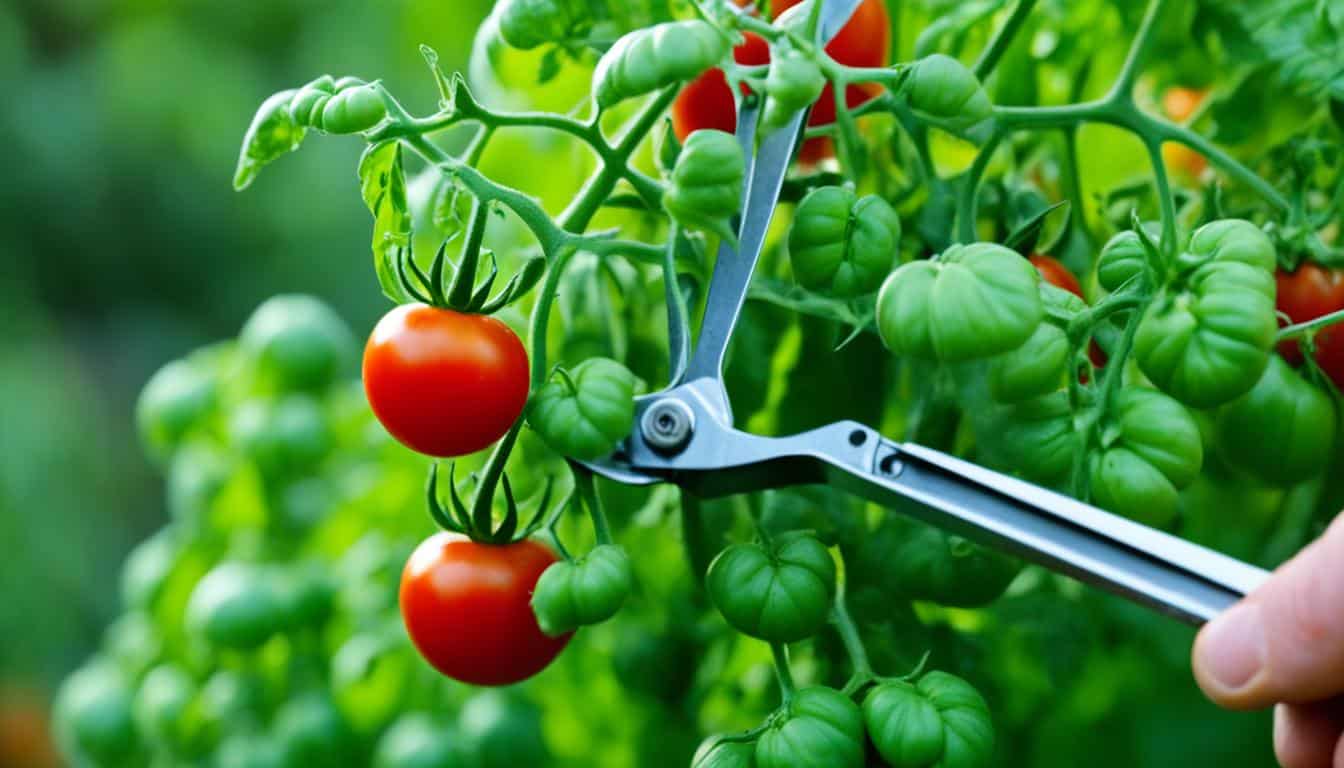
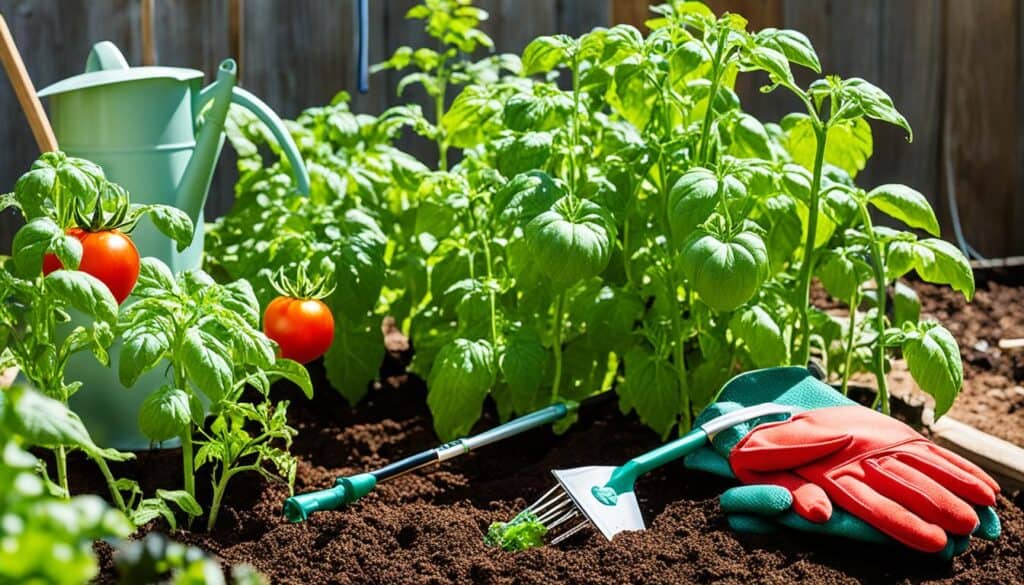
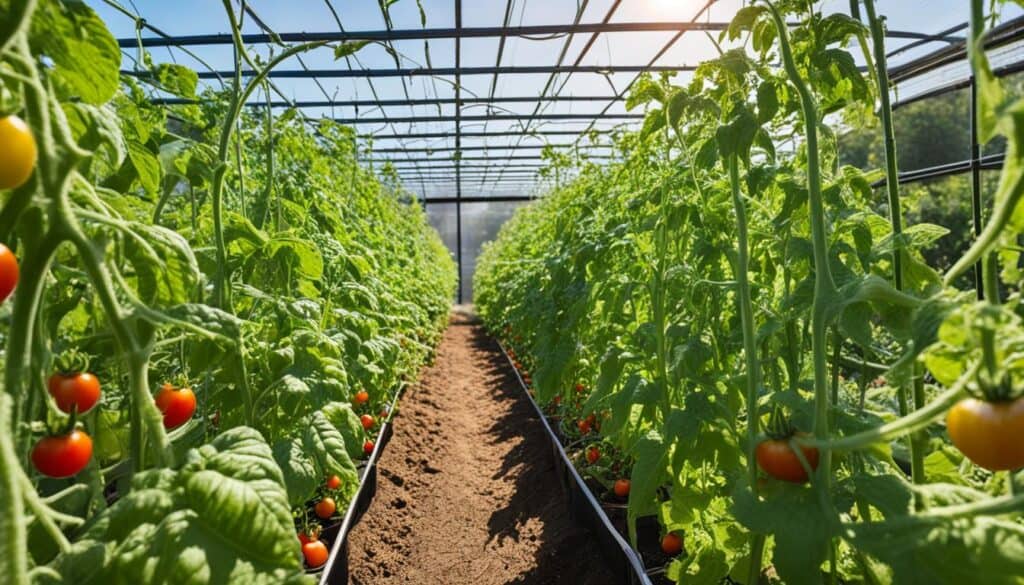
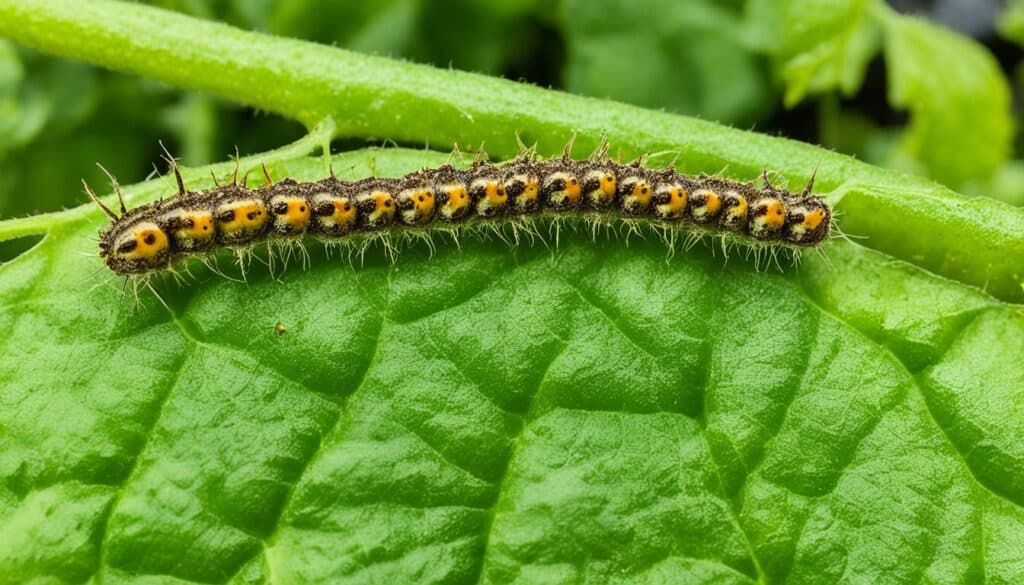
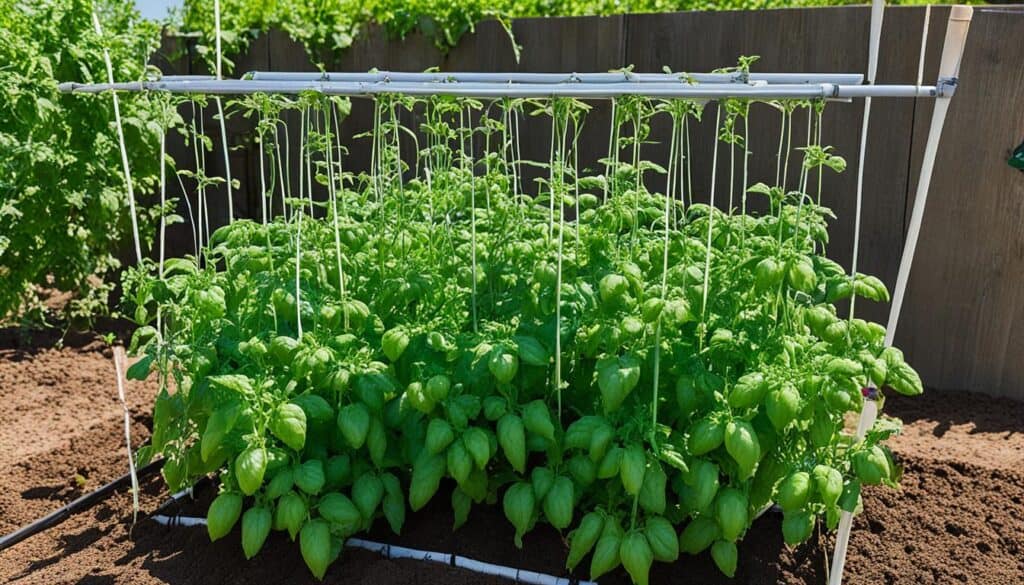
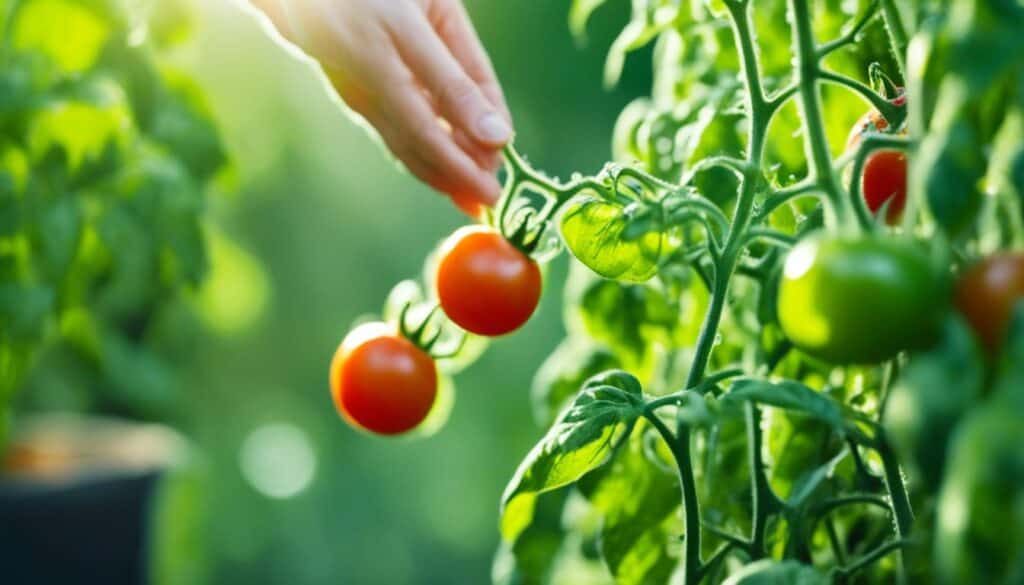



Leave a Reply